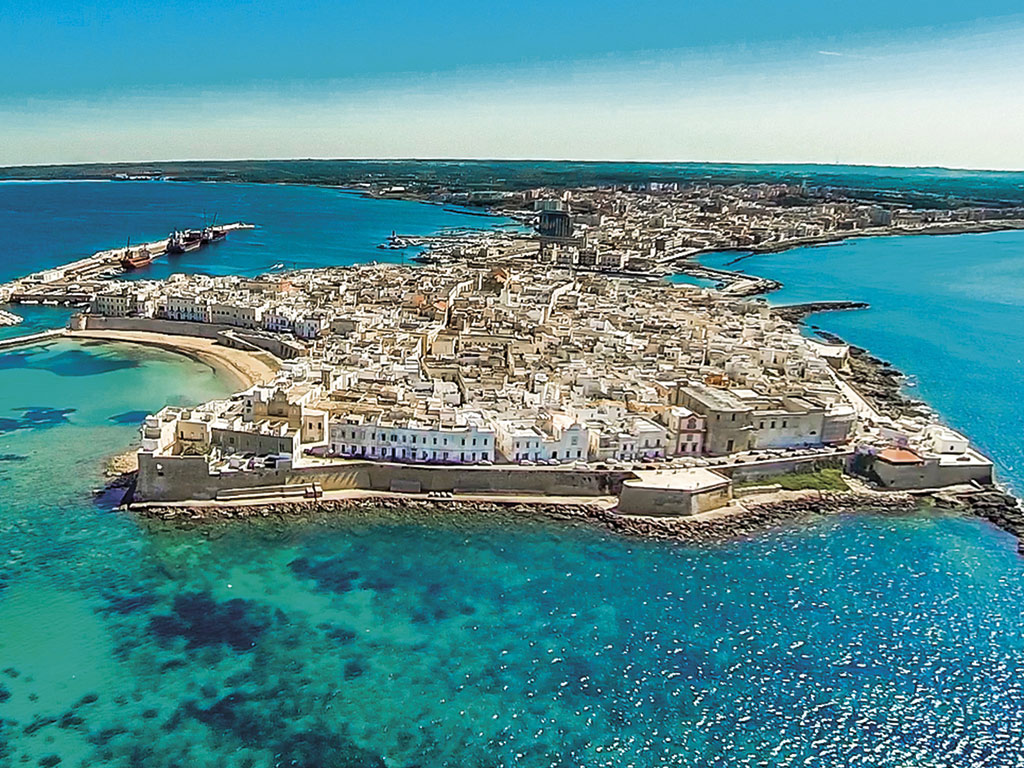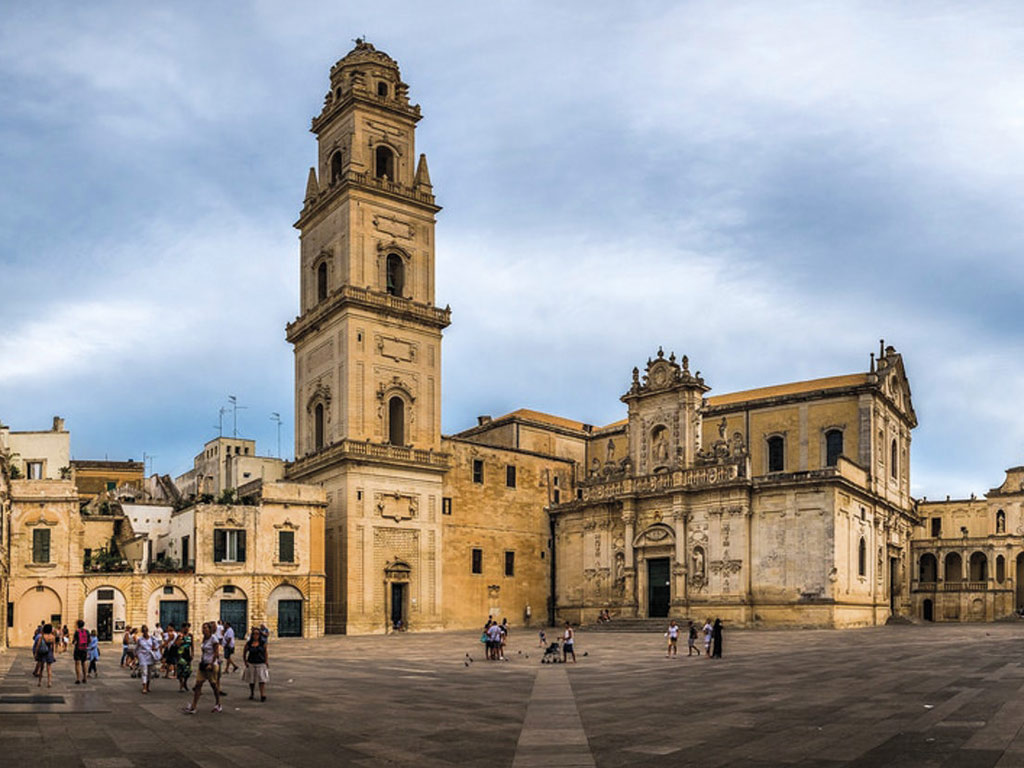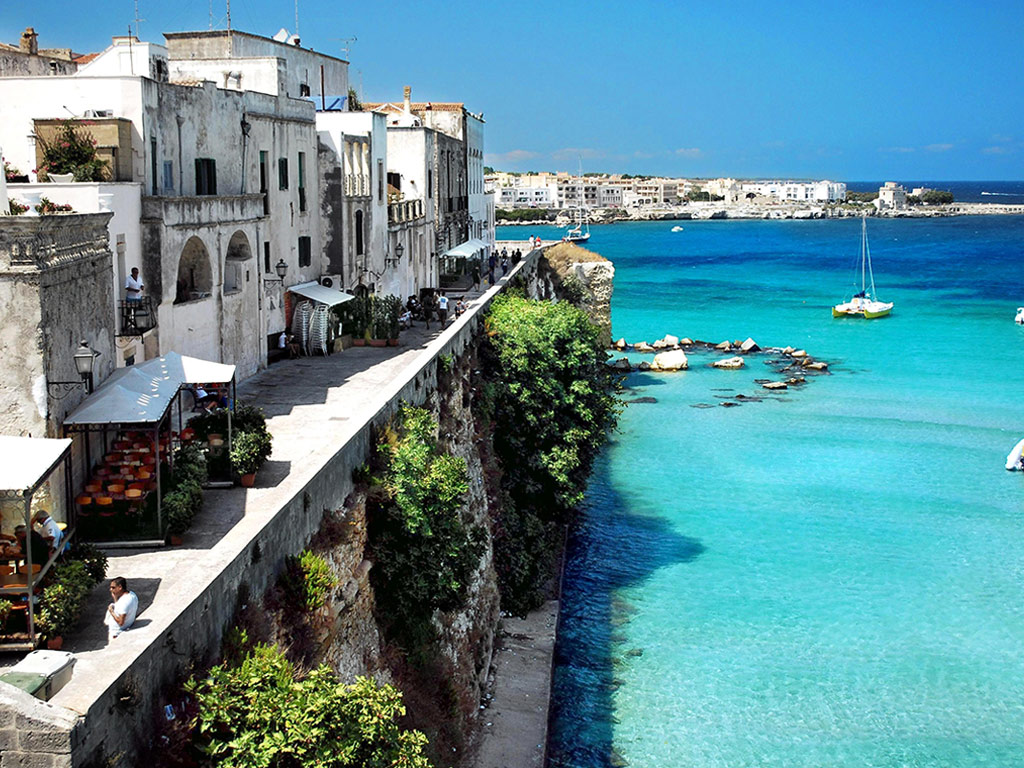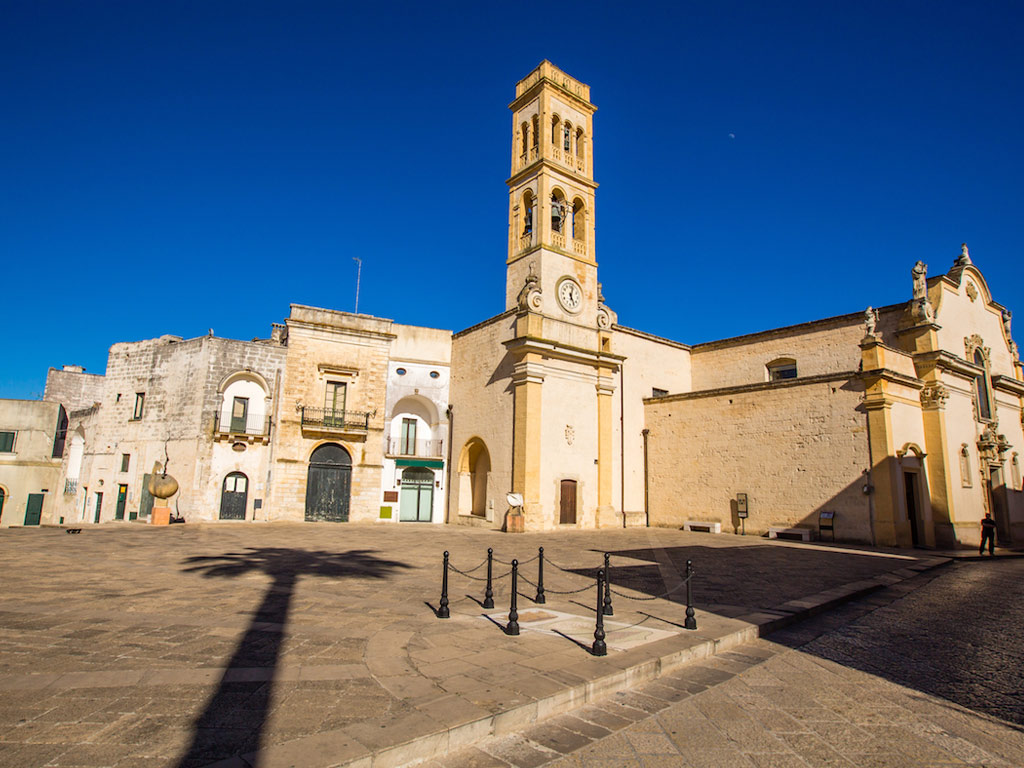City and art Lecce Otranto Gallipoli
Salento is a treasure chest filled with historical, artistic, and architectural gems—some in plain sight, others more hidden, waiting to be discovered.
Lecce, in the shade of the Baroque
Wandering through the historic centre of the city, aimlessly and dreamily like true travellers, we stumble upon the grand Piazza del Duomo. The Cathedral, the Archbishop’s residence (the episcopium), the seminary, and the Bell Tower stand before us.
In that space, in that wide open area, the dream of an explicit, bold, rich and refined beauty has magically come true. If you’ve heard about the Baroque style, if you’ve studied it in art history books, here it is at its highest expression, right before your eyes, in elegant and almost enveloping forms.
The monuments in the square are so boldly extravagant that the carousel of beauty sweeps you in every direction, making your head spin even as you stand still to take it all in.
Otranto, the frontier city against Saracen attacks
The Aragonese Castle, a mighty stronghold, the Norman Church that houses the skulls of Christian martyrs in a glass case, the long undulating sea-facing city walls, the enchanting old town. And then the little shops in the centre, local products, and culinary specialities.
Gallipoli, the pearl of the Ionian
It’s a wonderfully balanced blend of history (Greek, Roman, and Medieval) and modern life. Elegant bars, quality restaurants, and a stunning promenade that circles the old town. Churches to visit, beautifully restored noble palaces, the Greek Fountain, and vibrant nightlife.
You’ll never get bored in Gallipoli.
Specchia, one of Italy’s most beautiful villages
A few years ago, it was named a “jewel of Italy” — a title it fully deserves. Its long square invites you to stop and enjoy the air of the countryside and the sea, which seem to cross paths right there. You observe the palaces.
The countless stories of noble families over the centuries still echo in the halls, staircases, and gardens.
In conclusion
This is one of the keys to experiencing the towns and villages of Salento: immersing yourself in both nature and history. In other regions, towns and even villages have often lost touch with their historical, economic, and cultural roots. Modernity—with all its merits and flaws—has taken over. Not in Salento.
Here, you still see the vital role of farm work, the echoes of a vibrant history (from Frederick II to Bourbon dukes and barons), and the modern-day pursuit of wellbeing. Tourists walk these streets, these piazzas, these seaside paths—and simply enjoy being there.






